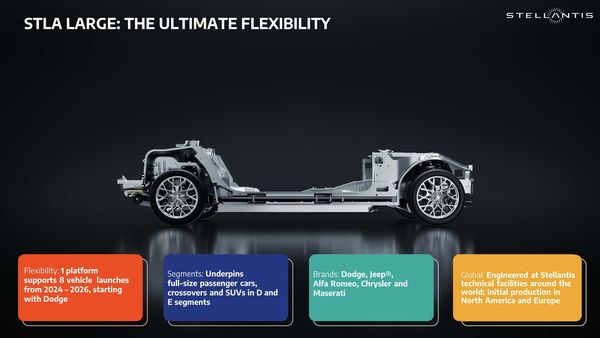
The older I get, the more love I’ve learned to have for Ohio, Indiana, and wherever else gets commonly lumped in as a “flyover state.” Let the Bushwickers—or maybe Orange County denizens—get all the hype in the media. I like it out here. Still, I’d be lying if there wasn’t a unique air of disenfranchisement when Midwesterners read the news. Coastal opinions of how the world works don’t always square with our reality. It’s not like Ohioans are behind, or ignorant.
No, that’s not true or fair; I think Midwesterners are by and large curious individuals, they just have their reservations and are generally pragmatic individuals. They know what they know: Hyundai can’t make quality cars, soup isn’t a real meal, and if anyone’s going to make a quality electric vehicle, it’ll probably be Toyota.
I understand why Midwesterners might have those opinions. The Tesla buying process is so weird compared to the dealerships we’re used to, and the whole driving experience of an electric car is opaque compared to a gas-powered vehicle. But all that Midwestern pragmatism isn’t exactly open-minded to the possibility of a high-quality, all-electric Hyundai.
Hyundai made bullshit-ass cars in the 1990s, and while they’re struggling with multiple engine recalls, the Midwest is ground zero for that unfortunate "Kia Boyz" theft trend. Meanwhile, Toyota did great with hybrids—why wouldn’t it excel at EVs?

It makes sense in the Midwestern mind, but it’s not right. I watched that attitude clash with reality when I had two different EVs in the span of two weeks: the Genesis GV70 Electrified, and the Lexus RZ 450e.
The Genesis GV70 EV was up first. As a converted gas-powered car—it does not use the groundbreaking E-GMP platform that other Hyundai Motor Group EV products ride on—I had a lot of reservations about the more than 5,000-lb electric crossover. Would efficiency, power, and driving dynamics take a backseat to a hastily-done EV conversion?
I, myself, loved the gas-powered GV70 3.3-liter turbo. I’ve commonly described it as a budget Porsche Macan, or “this is what the Mercedes GLE-Class thinks it is.” I was worried that it’d lose a lot of that spirit with the conversion to electric power.
Those fears were unfounded.

The GV70 Electrified might be the best iteration of all the GV70 variants, at least to me. The ride is delightfully creamy, somehow managing to marry an impeccable talent for absorbing road imperfections, without the expense of absolutely ruining driving dynamics. The GV70 Electrified was just about as sharp and engaging as the standard gas model.
The GV70 EV was fast, yet smooth. It had more than 400 horsepower, but like the G80 Electrified I’ve driven in the past, the vehicle rolled onto its power smoothly as if there was a sophisticated maître d' swiftly and firmly urging me to take my seat, rather than a slingshot flinging me from one side of the country to the next. It wasn’t just performance either.
The GV70 Electrified was reasonably efficient for its size and vehicle type. It held true at roughly 3.0 miles per kWh, an extremely efficient consumption rate even at freeway speeds with the air conditioning on. It made quick work of the 205-mile trip from Columbus to Detroit. It was so good, that I had to figure out what Genesis’s secret sauce was; how the hell did they do this?

So I asked them. “There’s a lot of work to take what was already a great platform, but make it good as an EV, “ said Andre Ravinowich, senior product manager of Genesis of America. “There was a significant amount of rework on the baseline car itself, to make it a good EV and still be pretty dynamic and not be compromised since it was an ICE model originally."
Although the GV70’s platform was designed to accommodate electrified powertrains from the get-go, Ravinowich explained that the GV70 still went through thorough revisions with the shift to full electrification. The brand reworked the front and rear suspension to accommodate the electric motors and weight of the vehicle. The GV70 Electrified uses more aluminum than the standard car. It now uses CFRP (Carbon Fiber Reinforced Plastic) cross-members that add stability to the structure; the electrified model is around 24% more rigid than the gas-powered car. “To me, that’s always been Genesis from the beginning; we’ve always been committed to being a luxury, Tier-One brand,” said Ravinowich.
Naturally, I went to extol the virtues of the GV70 Electrified to everyone I knew in real life, not just my journalist friends or car-oriented acquaintances. Most loved it, they agreed; the GV70 EV was a shockingly compelling product, a Darth, come-from-behind, underdog, unexpected entry from a brand that clearly has something to prove.

But others—my fellow Ohioans and other Midwestern friends—weren't so convinced. See, they loved the styling of the GV70 Electrified. They even were cool with the fact it was electric. Yet, when they’d ask who makes Genesis,” and I’d respond with “Hyundai,” I could see them lose interest as quickly as if they had watched me drop a big, wet turd on top of their nice new Jordans.
“Oh, never mind,” they’d say. One Tesla-owning friend (who was seeking to move on from his junky Model S) told me to my face that despite the style of the GV70 EV, they thought that Hyundai was simply behind the rest of the industry in terms of EVs, and the brand was not ready for prime time. He and a lot of other folks had the same sentiment.
They wanted a Toyota EV, because if any brand could dethrone Tesla, it’s Toyota.

I didn’t get it, the Genesis GV70 EV was so well done that I was struggling to find any strong flaws to gripe about in any sort of write-up. But, I had to decouple my mind away from what I know as a car journalist, and really get into the brain of the Midwesterners I was talking to. The electric car market is a fast-moving enigma, and I couldn’t possibly expect the average person to be fully aware of the nuances of what Hyundai is doing behind the scenes. Or, most pertinently, what Toyota is, or isn’t doing.
The week immediately following the Genesis GV70 Electrified, I ended up with a Lexus RZ 450e. On paper, the GV70 Electrified and Lexus RZ 450e are direct competitors. They are both in the same $65,000-ish price bracket, and both go roughly 200 miles on a charge. (It's 236 for the GV70, 220 for the RZ 450e with smaller wheels, or 196 for the RZ 450e with larger wheels.) They’re even both about the same size.
Impressively, the Lexus RZ 450e is more of a ground-up EV platform effort than the Genesis is. That alone should be an asset, as it ought to mean fewer engineering compromises inherent to ensuring a car can handle both gas and electricity. These assets should translate to higher range, better efficiency, and in theory, a way better car compared to a vehicle that was designed to do both.

Yet I was shocked at how lackluster the RZ 450e was.
I started in Detroit, intending to do most of the 205-mile trip back to Columbus without stopping; the Genesis had done it in one shot with more than 45 miles left of range. The GV70 Electrified was on track to beat its 236-mile range. When I hopped in the 95%-charged Lexus RZ 450e, the display showed a mere 190 miles, dropping to 145 estimated miles when I turned the air conditioning on.
“Girl, what the hell is this,” I wrote, texting a friend a video of the RZ 450e’s dramatic range loss. I was more than slightly indignant, partially because the RZ 450e’s lack of range had ruined my plans. I’d have to go off route and find a DC fast charger and add a lot of time to my journey. Not a great first impression.

I’d later ask Lexus about the issues with the A/C. “For the RZ, the predicted range is based on a variety of factors, including whether or not the HVAC is on," wrote Laura Finley, a Lexus representative. "By turning on the fan, there’s going to be more power consumption so there will be a predicted range drop. The amount of range lost when the HVAC is turned on is dependent on the outside temperature and humidity and the inside temperature set by the driver. For example: Barring no change in the level of humidity, if the AC is turned on max in 60-degree weather, there may be less range drop than if the AC is turned on max in 90-degree weather."
I guess that makes sense, but it didn’t explain why the Lexus swilled so much more power compared to the Genesis. I had never seen a range loss so dramatic when the heat or air conditioning was used.

Things didn’t get better over the week I had the Lexus RZ 450e, either. Sure, the crossover was swift enough, and comfortable enough, but lacked the brutality and grace of the GV70 Electrified. The Lexus barely managed 2.7-2.8 miles per kWh. It doesn’t sound all that far off from Genesis’s 3.0 miles per kWh, but in practice, the RZ 450e is a relative energy hog. When coupled with the RZ 450e’s smaller battery, the Lexus was always in search of a plug.
To top it off, the Lexus’s AC charging specs were a very mediocre 6.6 KW, and its DC charging curve was equally mediocre, only holding 150 KW for a few minutes before sinking in the double-digit range. The RZ 450e wasn’t all that good at anything.
“I think Toyota is at a point in history, where strategically, they’ve kind of missed the ball here,” said Dr. Partha Goswami, the Principal of PG Mobility Analysis. “That’s been reflected in putting together this vehicle in a very un-Toyota-like fashion; something clumsy and doesn’t even meet their own bar. I think that’s what you’re seeing when you’re driving [the Lexus RZ 450e], it’s kind of quick and dirty work,” asserting that Toyota really needed some sort of entry to the growing EV market, and on some level, it would be unwise to not have something there. “Even if you’re a very good student and always ace your exams, if you don’t spend enough time on it, you will flunk.”
That’s how the RZ 450e felt: clumsy, if not contemptuous, given the context of Toyota’s previous comments about electrification versus its investment in hybrid cars. It felt like an EV generated to silence critics of Toyota’s lobbying against EVs. “OK, fine. Here’s your EV that you wanted so badly, now get the hell off my lawn.” It felt like a car made very fast, and not all that well considered, and it shows.
It’s not all bad, though. Things may soon be changing. Last fall, Toyota told the world that it is taking its electrification efforts more seriously. It showed off a fleet of thinly veiled EV concepts that look compelling, like an EV MR2 revival, as well as an EV compact pickup truck concept in the same vein as the highly popular Ford Maverick.

Toyota remains heavily invested in battery technology, claiming its solid-state battery will easily touch the 600-mile range mark. “I think Toyota naturally would have taken longer than others, outside of the fact they didn’t think about doing (electrification). Their natural style is more deliberate and slow,” Goswami added. “Clearly their electrification story is full of faux pas, but I wouldn’t count them out yet.”
That might be true. However, in its current state, I couldn’t recommend the Lexus or Toyota EVs. Midwesterners are so cautious and value-oriented; I know what they’re looking for when they tell me that they’re waiting on an EV from Toyota. They’re waiting for a Tesla-like range, in a package that’s reliable, easy to use, and a good value. They want to walk out of the dealership, confident that they left in a car that’s well made and was a good deal. The RZ 450e didn’t feel like a good deal, for its few somewhat subjective virtues with regards to interior quality or styling, I couldn’t recommend a car that offered so little utility at such a high price.
I had a hard time relaying that to my Midwestern peers. The RZ 450e attracted comments and questions that had more utility; it was folks who were more than a little serious about making the switch to an EV. To them, the RZ 450e, (and by extension its lower-cost twin the Toyota bZ4x) was a contender. Finally, Toyota had ported its hybrid expertise to create a legitimate challenge to the Tesla Model Y.
Imagine their shock when I explained that the RZ 450e just wasn’t a good car. It was like explaining to a seven-year-old that Santa Claus isn’t real. The concept was unfathomable, but as I relayed to them the issues the car had with range, I could see them understand how underbaked the Lexus RZ was. They were waiting for a Toyota EV, and Toyota had let them down.
Maybe BZ4X and Lexus RZ 450e are one-off missteps in Toyota’s EV push. Maybe Toyota’s EV promises will come to fruition, and Midwesterners will soon be proven right—that Toyota was always going to be king of EVs like how it’s currently king of hybrids.
But, at least for right now, Hyundai is the one taking the electric vehicle seriously. Now it's up to the Koreans to convince people in Ohio that this is the case.
Contact the author: kevin.williams@insideevs.com










